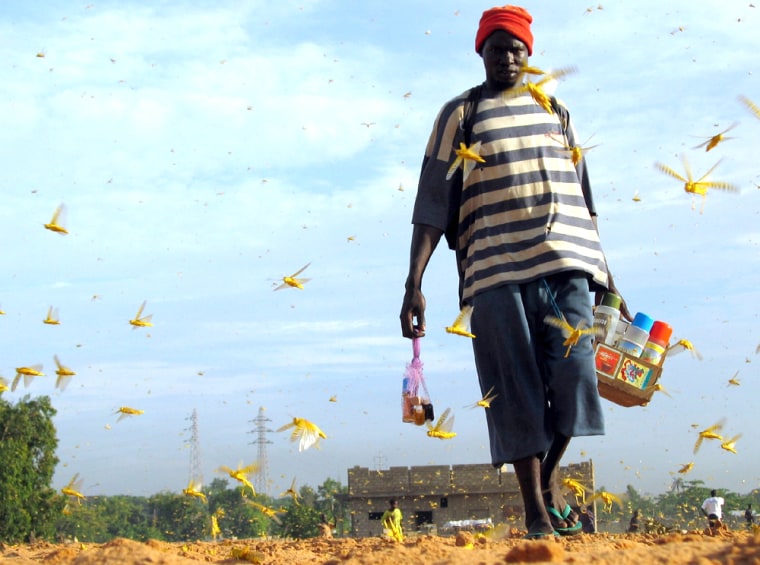Swarms of locusts that have devastated crops and pastures across West Africa may hit countries as far away as Pakistan, a U.N. agency said Wednesday as it announced an intensified control campaign.
The desert locusts are moving into southwest Libya, southern Algeria and the borders of Morocco, the Rome-based U.N. Food and Agriculture Organization said. Other swarms were reported in the south of the Western Sahara.
Speaking at a news conference on the agency’s emergency relief efforts, FAO Secretary-General Jacques Diouf said that if more was not done to tackle the swarms, they could spread east to countries including Afghanistan and Pakistan.
The FAO said “significant” damage to agriculture has been reported across the Sahel — the region on the Sahara Desert’s southern edge — and U.N. teams are on the ground to conduct a detailed assessment that should be ready by November.
The worst affected countries include Senegal, Mauritania, Niger and Mali.
Resources fall short
Diouf said the FAO stepped up its campaign in September, but resources, including planes and ground vehicles, were tied up with other problems — such as hurricane damage in the Caribbean and the humanitarian crisis in Darfur, Sudan.
Almost a year after the FAO launched its first appeal for help with the locust problem, the agency has received just under $20 million out of a total target of $100 million, Diouf said. With $43 million more pledged, Diouf said the response was “encouraging,” but called for more funds.
“Our appeal is to the whole international community and particularly to the countries with more money, the developed countries,” Diouf said. “The longer we wait, the more money we are going to need.”
He said environmental concerns about using pesticides had held up FAO efforts, and that the agency was studying alternative ways of fighting the locust swarms.
Worst infestation in 15 years
The FAO must use products registered in the countries affected by the swarms. It must also take into account that pesticides can become obsolete if they are overused. Of 7,413,000 acres of land affected, some 2,162,000 have been treated with pesticides.
This week, six more aircraft were being added to the four already being used to fight the locusts, the agency said. Some 158,500 gallons of pesticides have been delivered, with 184,900 gallons more ordered.
“This is the worst situation we have had for 15 years, and there is a serious threat to the winter harvests,” said Annie Monard, an officer with FAO’s locust group.
Locusts are present every year in Africa, but this year’s swarms are especially large because of prolonged periods of heavy rainfall. The insects eat their weight in crops every day, and group together in swarms dozens of miles long.
